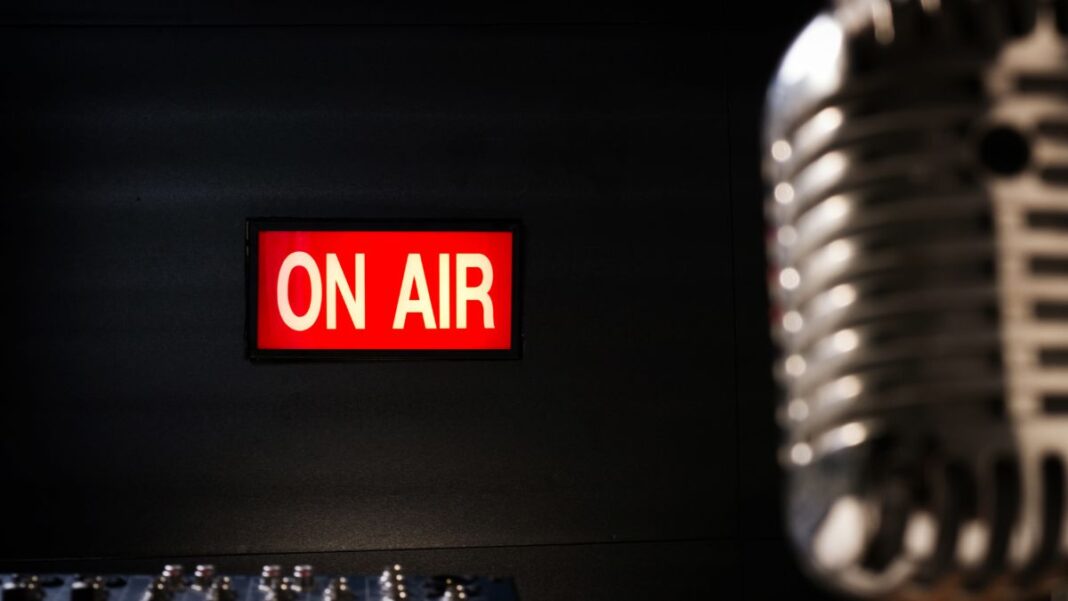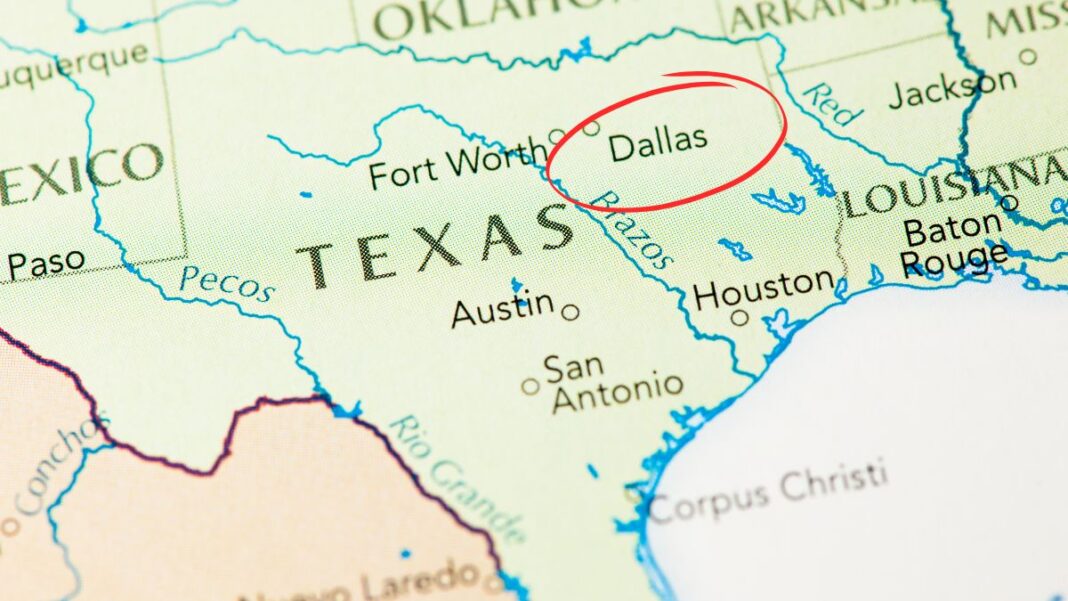One of the real benefits of being removed from the inside of a radio station, is that you can analyze things about the industry without having your judgment skewed as a result of being too close to certain situations.
During the past 10 years, I’ve programmed four radio stations, and during that time I’ve always looked forward to ratings day. Usually once per month on a Monday at 12pm, my station’s would receive their report, and get a better understanding of how the audience was connecting with the product, where the strengths of the brand were, and what challenges needed to be addressed.
 For some air talent, this was an important day because a strong performance meant a ratings bonus. For sales people it mattered because a good story could help them in their quest to gain larger investments from clients. And for some like myself, it was an opportunity to learn if the vision and execution for the brand was working.
For some air talent, this was an important day because a strong performance meant a ratings bonus. For sales people it mattered because a good story could help them in their quest to gain larger investments from clients. And for some like myself, it was an opportunity to learn if the vision and execution for the brand was working.
Having had a chance now to step back, and remove myself from the daily rigors of running a station, I don’t miss that part at all. I thought I would but I don’t.
I know what you’re thinking “you’ve always loved ratings, and you’re not in a building, so that’s why it’s not as big of a deal”. Honestly, my opinion is based on a bigger reason – in its current state, the performance of a personality, brand, and talk show, can’t be measured accurately or receive its fair market value!
I could spend all day railing on the ineffective PPM ratings system, but that’s not my focus. The issue I have is with the mindset of our industry, those who buy and sell advertising, and those who have a chance to influence change but accept the status quo.
One of radio’s biggest problems, is that it’s reactionary. Rather than lead the charge to innovate, and introduce new brands, sounds, and people, the business lives in the past, and present.
How many markets can you think of where a personality who has failed or underperformed in the ratings, gets hired by 3-4 different stations? Rather than take the more difficult road, and introduce something new which will have short-term setbacks, but pay long-term dividends, we default to what we are comfortable with. Someone else’s trash becomes our treasure.
That’s not only an on-air problem, it’s a behind the scenes issue too. Sales people rotate back and forth between various stations in each city, because the talent pool is thin, and scouting, recruiting, and developing people is hard. It doesn’t matter if someone has not made budget multiple times for 2-3 other brands, if they join our team, we’ll get them on track.
That sounds good until the leopard shows their spots and delivers the same exact results as they had before.
I’m not here to single out anyone, but I do want to draw attention to what I believe is the future of impact, and it’s something that should be keeping every single Owner, Corporate Executive, General Manager, Sales Manager, Program Director and Advertising Agency Buyer awake at night.
I’m talking about the power of reach!
There is too much confusion in our business right now about what matters when measuring the performance of a station and/or personality. There’s also a poor understanding of the worth of our products across multiple platforms. More sales people look at the sum total of what they’ve asked a client for, and judge the transaction as a win or loss based on if they get the sale, rather than analyze the entire worth of the package.
Let me give you an example.
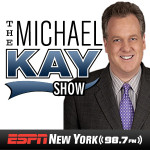 If you are in New York, Michael Kay is a pretty big deal. He’s the voice of the New York Yankees, and hosts afternoon drive on 98.7 ESPN New York. His program is simulcast on the YES Network, and can also be heard on SiriusXM, the station’s website and mobile app, as well as through TuneIn and Slacker.
If you are in New York, Michael Kay is a pretty big deal. He’s the voice of the New York Yankees, and hosts afternoon drive on 98.7 ESPN New York. His program is simulcast on the YES Network, and can also be heard on SiriusXM, the station’s website and mobile app, as well as through TuneIn and Slacker.
For those who can’t hear it LIVE, audio and video of the program can also be enjoyed via a podcast on the station’s website, Apple iTunes, Player.FM, and on YesNetwork.com. Michael is also on Twitter and has 146,000 followers.
This is what a major brand looks like.
The only question is, does the program receive its full value from advertisers who have their products and messages delivered to listeners on all of these platforms? I want to believe that they do, but I’m not convinced.
Why do I say that? Because in running stations in multiple markets for the past 10 years, sales people are more focused on hitting their number, rather than looking at what the value is of their brand and controllable assets. Advertisers, and ad agencies also have this belief that if they’re going to give you one hundred thousand dollars for three months of advertising, then you better give them as much bang for their buck as possible.
In many cases the sales person will offer “added value” sponsorships before a client even asks for them. Many reps also lack confidence, and a keen understanding of digital and social media advertising, therefore generating large dollars on them becomes nearly impossible.
Now listen, there’s nothing wrong with super serving a client, and hitting the budgeted goal that was set for the sales rep based on traditional radio advertising. But it’s foolish to think we’re going to drastically increase rates and get our worth from advertisers, when our entire history shows we undervalue our brands, and cause our own pricing problems.
 This past week in Philadelphia, WIP and 97.5 The Fanatic were engaged in a tight ratings race. WIP won the PPM battle which based on today’s standards means they were the #1 rated brand. However, the Fanatic’s streaming numbers were outstanding, which when combined with the over the air measurement, forced a dead heat between the two stations.
This past week in Philadelphia, WIP and 97.5 The Fanatic were engaged in a tight ratings race. WIP won the PPM battle which based on today’s standards means they were the #1 rated brand. However, the Fanatic’s streaming numbers were outstanding, which when combined with the over the air measurement, forced a dead heat between the two stations.
For both brands, they had a story to work with. Based on the existing model our industry works with, WIP is winning. Delivering radio ratings is what the talent are expected to do, and selling those ratings is what their reps are charged with. Except there’s one big problem – if these are the only two areas to concentrate on, how can the industry grow?
Do we really believe that advertisers are only going to care in the future about the way a station performs in PPM? Are sales reps going to only be measured based on how they sell traditional advertising?
We don’t seriously believe that listening through our websites, mobile apps, on-demand, and through other audio providers who we partner with doesn’t count do we? If a PPM meter picks up the audio signal then the listening counts, but if it doesn’t then the listener never really listened to our programming?
I’ve got a better chance of growing a full head of hair than listeners and buyers accepting that nonsense.
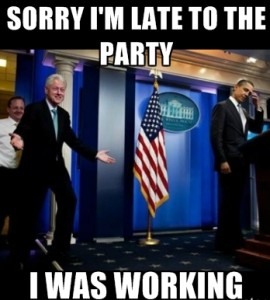 This goes back to radio being reactionary, rather than out in front. Who’s fault is it that we have poor measurement? Ours! Who decided to make programming available in all of these other locations yet accepted a system where those listening numbers don’t count towards our proof of performance? We did.
This goes back to radio being reactionary, rather than out in front. Who’s fault is it that we have poor measurement? Ours! Who decided to make programming available in all of these other locations yet accepted a system where those listening numbers don’t count towards our proof of performance? We did.
How can we on one hand place our content across multiple platforms, and reward the user, yet on the other hand limit our own ability to demand larger dollars from clients? The system they use to determine whether or not our product performs, doesn’t take into account the total amount of listening in all of these other locations.
You can make a case that the listening being done on all of these other platforms is more reliable than the number you receive in your monthly ratings report. We can tell which days and times a listener clicks on a button and streams the radio station, and which content appeals most to them. Meanwhile, we can’t be sure if we have 100,000 listeners sampling the station on a radio, because that number is determined by 20-30 people carrying a meter.
We also don’t know if those who carry meters have left the device near the radio and walked out of the room, or if they really listen. We have little information about what their content preferences are, and if one meter breaks routine and is unavailable to listen due to a business meeting, vacation, or other distraction, it has a drastic impact on that month’s ratings for the radio station.
How crazy is this, an individual could have their device on, walk into a grocery store which has the radio station playing over the speakers, and if the meter picks up the audio signal for five minutes, that station will get credit for listening. It doesn’t matter that the person with the meter was only exposed to the audio, and not interested in it.
Is this really the best we can do for ourselves, our advertisers and our listeners?
I believe total audience reach and brand association should be priority number one for clients and operators. You can have a great ratings report, and that’ll be part of your story, but as I showcased above with Michael Kay, advertisers are smart enough to recognize when a brand has power to connect their product with a big audience. If you want to reach the largest sum of people, you invest in partnerships with people who have the ability to pull in customers from numerous locations.
 If Michael’s TV and radio ratings for the show were low, yet his streaming, podcast, mobile sessions, and audio partnerships were producing giant numbers, then he still has a big audience to offer to an advertiser. Sure it’s better if you have the ratings to go along with it, but listening is more splintered than ever, and the grand total of audience carries much more value than a monthly ratings report.
If Michael’s TV and radio ratings for the show were low, yet his streaming, podcast, mobile sessions, and audio partnerships were producing giant numbers, then he still has a big audience to offer to an advertiser. Sure it’s better if you have the ratings to go along with it, but listening is more splintered than ever, and the grand total of audience carries much more value than a monthly ratings report.
Think about this, if Michael sent out a tweet to his 146K followers promoting a company, and a bunch of people take his advice and buy the product, don’t you think that satisfies the client? Do they care where the lead came from? No! They simply want more customers, so they can make more money. If they associate with Michael, and their business grows, you better believe they’re going to continue investing in him, and his radio station, even as the rates increase.
If I was spending my money, I’d want to know that my company is reaching the largest audience possible, and providing a return on my investment. I don’t care what report you show me, I want to know that my message has been consumed, and it’s leading to results. However you accomplish it, and on which platform you do it, that’s irrelevant – just help me grow my business!
Voltair has already exposed PPM for having major flaws, and although Nielsen is taking steps to improve their measurement, industry leaders now question whether or not they are reliable. How are you supposed to change a perception when the reality is that the service isn’t 100% accurate? I’m not sure you can.
The most important lesson we’ve learned though, is that it’s the user who has changed the game. People want what they want, when they want it, on the platforms they consume content on, and it’s the company’s issue to figure out how to gain credit for the product consumption, and how to monetize it.
Case in point, look at Katie Nolan of Fox Sports.
 In Katie’s case, her reach is way more powerful than her television program. I’ve watched a bunch of her material and I enjoy it immensely, but I have only watched her on television once! I’ve watched her videos on YouTube numerous times, and I’ve clicked links that she’s promoted on Twitter and Facebook. I don’t set an appointment to watch her on television, but I do seek out her content.
In Katie’s case, her reach is way more powerful than her television program. I’ve watched a bunch of her material and I enjoy it immensely, but I have only watched her on television once! I’ve watched her videos on YouTube numerous times, and I’ve clicked links that she’s promoted on Twitter and Facebook. I don’t set an appointment to watch her on television, but I do seek out her content.
Does that mean my viewing doesn’t count or matter? Of course not. It’s Fox Sports’ issue to figure out how to monetize the audience who consume her work in multiple locations, and it’s Katie’s job to simply produce outstanding content that keeps the audiences coming back, and expanding.
If an advertiser is smart, they’ll invest with Katie and Fox, because they recognize they have an ability to reach people. In the end, it’s about brand exposure, influence, and sales. If Katie can put eyeballs and ears on a product, then it shouldn’t matter where it originates from. It’s even more likely to work if that advertiser utilizes her for a personal endorsement. When a talent passionately gets behind a product, the results are often much higher.
There’s another side to this story, and it applies to the advertisers and ad agencies. They need to be part of this solution too. Radio groups have lived and died with Arbitron and Nielsen because it was the system that agencies believed best reflected the interest of the audience in the station’s programming.
Does it have some benefits? Yes. Should it continue to be utilized? Sure. Does counting streaming and mobile help? Yes. But if you’re an advertiser, and you’re utilizing an agency to place your advertising, you should want to see more specifics, results, and total cume across all media platforms, not just a radio and/or television ratings report.
Wouldn’t you want to see what an impact looks like for your brand if you associate your product with a station or personality’s Facebook and Twitter accounts? Wouldn’t you like to know how your brand benefits by being associated with the station’s podcast, and YouTube page?
Maybe your sponsorship includes an association to the brand through TuneIn, Slacker and iTunes. If a show is on radio and television, are you being featured in both locations, and how do you explain it if the advertising is working on the show in one location but not the other?
 After all of that has been considered (and there’s many more ways to extend a sponsorship too), then you have to decide, which percentage of your buying should be higher on certain platforms, and lower on others. You also need to decide if you’re willing to invest more in reaching more people. For some clients, that’s not possible.
After all of that has been considered (and there’s many more ways to extend a sponsorship too), then you have to decide, which percentage of your buying should be higher on certain platforms, and lower on others. You also need to decide if you’re willing to invest more in reaching more people. For some clients, that’s not possible.
Is it a lot of extra work with enormous challenges for radio people and buyers? Yes. But we’re not living in a world anymore where television viewing takes place between channels 2 and 13, and radio listening happens only inside of an automobile. We owe it to ourselves, our clients, and our listeners, to do better in showcasing our brand’s true story.
The final piece to this puzzle, comes from the talent side. And this is an area that is going to give some operators and executives indigestion.
Talent today are paid to perform a radio program, which can also be featured on the station’s website, mobile app, and through other audio partnerships. If the program they perform delivers a strong PPM ratings performance, most groups reward them with a quarterly bonus.
Talent are also asked to endorse products in exchange for additional compensation, and most employers require that they contribute to their companies digital efforts either through creating additional written or video content.
But what happens when they start losing out on bonuses because the product is being consumed in other places where it impacts their credit?
What if a program delivers massive streaming numbers or podcasting numbers, but it’s not showing up on the ratings report? Shouldn’t the talent be incentivized for that? If they get behind the strategy, promote it effectively, and the station delivers record numbers on these platforms, which leads to increased interest and business from clients, shouldn’t the talent share in the success? Will bonuses change in the future and include performance incentives across all audio platforms?
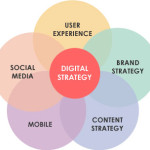 I hear radio companies today talk a lot about the importance of being stronger in the digital space, and users have already demonstrated that they will reward those efforts if the content available is good, and presented by personalities they enjoy reading or listening to. However, what I don’t see being discussed is how the talent shares in this space.
I hear radio companies today talk a lot about the importance of being stronger in the digital space, and users have already demonstrated that they will reward those efforts if the content available is good, and presented by personalities they enjoy reading or listening to. However, what I don’t see being discussed is how the talent shares in this space.
If you’re a personality, and you’re hired to host a radio program, deliver ratings, and help advertisers sell their products, and you check all of those boxes, you’ve done your job. However, if you’re willing to add on writing and creating video for the brand’s digital platforms, that’s even better. It shows you’re willing to do whatever it takes to connect with your audience, and support your employer.
But when that added work starts to register, and becomes profitable to the place of business, employers shouldn’t be surprised when a talent is back inside the office with their hands out asking for more. If you want to grow your digital performance you need great performers, and the talent will do the work, but eventually it will cost something.
In your place of business, do you have a bonus system in place for a talent if they deliver a certain number of podcast downloads? Do you have a rate card established for talent who endorse a client’s products on their Twitter account? Is there an incentive strategy for them if they produce written or video content and deliver an agreed upon number of clicks?
I’m not talking about “added value”, “we’ll get you some trade” or “we’ll throw a few bucks your way”. If we can create a radio ratings bonus structure to keep talent pushing to perform, then there should be other systems in place to reward them for taking on additional projects to help the company grow its digital footprint.
The mentality too often in our industry is to demand our people to do more, and fail to reward them for it. When we do that it usually results in them doing what was requested, but not emotionally getting behind it. It’s equivalent to reading a LIVE mention, and delivering a personal endorsement. One pays you, one doesn’t. Coincidentally the talent invest themselves in the LIVE spot, and breeze past the mentions.
This may require bigger conversations with multiple leaders, and different companies, but as the media landscape continues to evolve, this will become a bigger focus, and if we don’t start thinking about it and planning for it now, it could become a bigger problem.
 The last thing I’ll leave you with is this. Today, we place the content of our shows into multiple locations, which leads to splintered listening, yet we fail to build a complete strategy to capitalize on all of it. You can offer great content in ten different places, but the user is still only going to consume it in one. If you’re going to do that, and potentially impact your own performance on a platform which may be more important, shouldn’t you be sure that it makes financial sense to do so?
The last thing I’ll leave you with is this. Today, we place the content of our shows into multiple locations, which leads to splintered listening, yet we fail to build a complete strategy to capitalize on all of it. You can offer great content in ten different places, but the user is still only going to consume it in one. If you’re going to do that, and potentially impact your own performance on a platform which may be more important, shouldn’t you be sure that it makes financial sense to do so?
There’s a world out there that craves our content, but likes to choose when and where they get it. It’s our job to figure out how to capitalize on that interest, and promote our effectiveness across ALL channels, not just one measurement system.
To succeed there needs to be additional training, new ideas, and new people. You can’t expect everyone to grasp every new concept, and what they’re preparing for today, may not even be what’s important to your business’ bottom line in 2-3 years.
There is though one thing I firmly believe. If you want to command larger dollars in the present and future, you better have reach on your side. Total audience has more staying power, and long-term revenue potential than any other measurement.
My advice, be everywhere you can, and have a game plan for how you’ll present your data to those who are considering doing business with you. No client is going to reject doing business with you if you have a large audience to offer. Even if it’s built through multiple platforms. You can stick with what you know, and do what radio is notorious for doing, which is waiting for it to become a bigger deal. The only question I have is, can you really afford it?
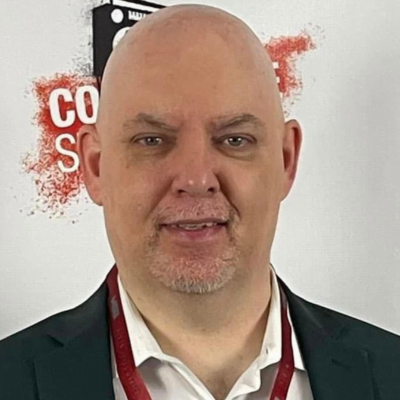
Jason Barrett is the President and Founder of Barrett Media since the company was created in September 2015. Prior to its arrival, JB served as a sports radio programmer, launching brands such as 95.7 The Game in San Francisco, and 101 ESPN in St. Louis. He also spent time programming SportsTalk 950 in Philadelphia, 590 The Fan KFNS in St. Louis, and ESPN 1340/1390 in Poughkeepsie, NY. Jason also worked on-air and behind the scenes in local radio at 101.5 WPDH, WTBQ 1110AM, and WPYX 106.5. He also spent two years on the national stage, producing radio shows for ESPN Radio in Bristol, CT. Among them included the Dan Patrick Show, and GameNight.
You can find JB on Twitter @SportsRadioPD. He’s also reachable by email at Jason@BarrettMedia.com.






